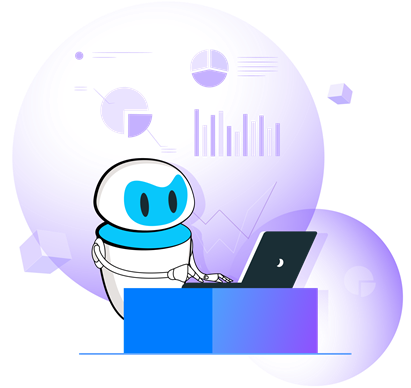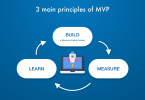A virtual agent is a sophisticated AI script that can conduct one-to-one conversations with users to solve problems and deliver various services. A virtual agent operates by harnessing the strengths of cutting-edge technologies such as Natural Language Processing (NLP) and Machine Learning (ML). Thanks to these technologies, a virtual agent can perform complex actions—similar to what a human agent would do—to understand user interactions’ precise contents and context. It can gather data by asking questions and verifying information to understand what the user wants. This data is then parsed through a pre-built knowledge base to locate pertinent information to provide users with the relevant answers.

(Source)
The primary goal behind deploying a virtual agent is to provide round-the-clock assistance to end-users and provide faster resolution times than human agents on the clock. With that goal in mind, there are certain questions you need to ask when you are choosing a virtual agent to deploy.
1. Is my virtual agent accessible on all relevant channels?
In this day and age, organizations have to engage with their users via multiple channels. Gone are the days of centralized support platforms. Today you have to go to wherever your users are—social media, mobile apps, business communication platforms, messaging platforms, etc.—if you wish to maintain effective communication with them. Providing an omnichannel experience is essential to maintaining user satisfaction. It also allows your agents to be more mobile and reach users faster than conventional single platform communication.

(Source)
As such, if you are looking for a virtual agent to be just as useful as human agents, they should effectively communicate with users on all the same channels that a human agent can use. Ensure the virtual agent you choose can maintain its full range of features and productivity regardless of the platform on which it interacts with the users. It will be essential to maintaining a seamless user experience with your brand.
2. Can I customize my virtual agent to fit my brand identity?
An agent is a representative of your organization and a vital component of your brand value. Human employees undergo extensive training in your organizational culture and best practices to project a consistent image of your organization when interacting with end-users. A virtual agent seeking to replicate a human agent’s value must get the end-user to relate with your brand and interact with them much like a human representative from your organization would.

(Source)
When you are considering a virtual agent, you must take into account how customizable it is. Does it have features you can tweak that allows it to emulate how you might direct a human agent to behave? A high degree of customizability is essential to getting your virtual agent to act as an organic representative of your brand rather than a generic third-party service. This factor is key to how readily your end-users will adopt it.
3. Does my virtual agent come with multilingual support?
In our globalized economy, especially in the realm of technology, it is increasingly common that your users will come from different countries all over the world. This means that your users will not have a unified language preference. To scale your business effectively in such a reality, you need to meet them halfway and communicate in their comfort zones to maximize access and ensure satisfaction.

(Source)
Fortunately, technology today can help you bridge that gap without requiring massive resources. A robust virtual agent that comes with an NLP framework capable of adapting to multiple languages can add immense value to your business. Make sure you consider this factor when choosing a virtual agent. This feature can be key to scaling your services internationally without incurring the costs of procuring a multilingual team of human agents.
4. How organic is my virtual agent?
A virtual agent is more than a simple chatbot. The ideal virtual agent should not be very distinguishable from a human agent. In other words, it should not be evident to the end-user that they are interacting with a computer. This can only happen when a virtual agent can process natural language to an appreciable degree. The agent should be proficient enough to understand user queries, have a coherent back and forth interaction with them, ask meaningful questions to refine the nature of their query, and be intelligent enough to provide the relevant answers in the context of the query. Just like human agents, they should be able to get better at their jobs over time.
Therefore when you are considering a virtual agent, it is essential that you thoroughly audit the underlying technologies augmenting its capabilities to gauge how promising it is in real-world performance. Don’t get swayed by empty buzz words. If you are sourcing the technology from a software provider, make sure to understand the extent of their NLP capabilities and test them out. Ascertain what use cases the virtual agent is optimized for to make sure they align with your needs. You also need to ensure that the machine learning algorithm powering the virtual agent is up to scratch can deliver measurable improvements over time.
5. Can I analyze how my virtual agent is performing?
Deploying a virtual agent is a constant work in progress. It takes planning to figure out where to deploy it and design it to fit those needs. Once you have it up and running, you need to measure its performance and gather feedback on its efficacy. You need meaningful metrics to understand if your virtual agent implementation is on the right track and acquire guidance on how you might improve its build to let the agent do its job better.

(Source)
To ensure a successful implementation, you must source a virtual agent that comes with a robust suite of in-built analytics that can help you accumulate relevant data. This will allow you to monitor the behavior of the agent when it is interacting with end-users. The information you garner will let you refine the virtual agent’s behavior to optimize its conversations and make it more effective at solving problems. This way, you can build up a virtual agent that you can reliably trust to handle mission-critical operations with minimum to zero human intervention autonomously.





Leave a Comment